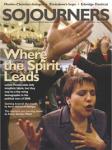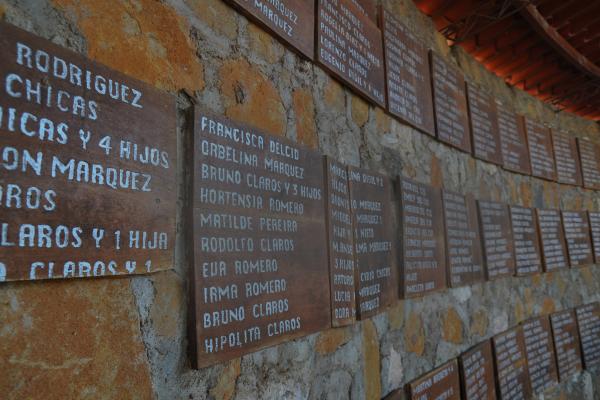In 2005, on a spring trip to El Salvador, I wasn’t expecting to find Easter. It’s definitely a “Good Friday” kind of country, one that has carried the cross for a long time. However, on Easter morning I found myself heading up a gravel road into the mountains of Morazán near the Honduran border, to the site of the El Mozote massacre.
In December 1981, soldiers of the Salvadoran army’s elite, School of the Americas-trained Atlacatl Battalion surrounded the village of El Mozote and murdered more than 900 men, women, and children. “As far as is known,” wrote Alma Guillermoprieto, who broke the El Mozote story in The Washington Post, “this was the single largest massacre to take place in this hemisphere in modern times.”
As we drove past the Rio Sapo and into the village, a few children approached the car. They were eager to show us the memorials and take us to the pits where the Argentine Forensic Anthropology Unit had unearthed bodies and bone fragments with strips of cloth still attached. Especially they wanted to show us the plaque placed over the mass grave of 140 children and take us through the rose garden planted in their memory. There is also a rough curved stone wall, not too far from the church, on which the names of the dead are written. It’s watched over by the iron silhouette of a family.
There was nothing, I was convinced, of resurrection in this place. It was 100 percent Good Friday crucifixion, unmerited suffering brought on by the sins of the world. I was tempted to ignore the Sunday scripture readings while in that place and only focus on Christ’s passion. But something told me to trust a little more in Easter.
From my pocket lectionary, I read aloud the opening prayer: “God our Father, creator of all, today is the day of Easter joy. This is the morning on which the Lord appeared to humans who had begun to lose hope and opened their eyes to what scripture foretold: that first he must die, and then he would rise and ascend into his Father’s glorious presence. May the Risen Lord breathe on our minds and open our eyes that we may know him in the breaking of the bread and follow him in his risen life.”
I stood on the ruins of a house where the women were told by the soldiers to gather to receive food for their “trip.” Instead they were shot and bayoneted. The house was then burned with the women inside. I read Psalm 118: “I shall not die, but live and declare the works of the Lord.” I walked down a path to where one wall of the original church still stands—the riverstone wall is pocked with bullet holes. “The stone the builders rejected has become the cornerstone.”
I stopped at the grove of trees where massacre survivor and public witness Rufina Amaya is said to have hidden before she escaped into the mountains. “But Mary stood weeping outside the tomb,” I read from John 20. “Jesus said to her … ‘Go to my brothers and say to them, “I am ascending to my Father and your Father, to my God and your God.”’ Mary Magdalene went and announced to the disciples, ‘I have seen the Lord’; and she told them that he had said these things to her.”
Stories of the massacre were dismissed as propaganda by both the Reagan administration and El Salvador’s military junta. Amaya was ridiculed and criticized, doubted and disbelieved—but the story she told was true. Through her, the world came to know the horror of El Mozote; some measure of justice and acknowledgement was gained from those who gave the orders and did the killing. “God saved me because he needed someone to tell the story of what happened,” she said in a 1996 New York Times interview. When Amaya died in March 2007, thousands of people from around the world came to the small mountain village of El Mozote for her funeral. She is buried there with her husband, children, and community.
One of the Argentinians who assisted in opening the mass graves, Claudia Bernardi, describes El Mozote as “a place with a peculiar, yet complicated, sense of hope.” Easter is sometimes hard to find. Other times, Easter finds us. “However early we run to the tomb,” says Archbishop of Canterbury Rowan Williams, “God has been there ahead of us.”

Got something to say about what you're reading? We value your feedback!
